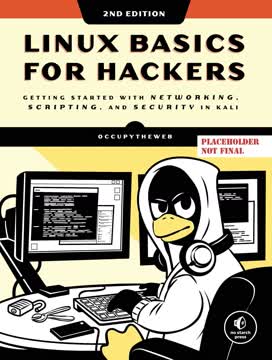Key Takeaways
1. Linux is the Hacker's Operating System
Almost all the best hacker tools are written in Linux, so some basic Linux skills are a prerequisite to becoming a professional hacker.
Open Source and Transparent. Linux's open-source nature allows for deep customization and manipulation, essential for hacking. Unlike Windows, Linux's transparency allows users to see and control every aspect of the operating system, making it ideal for understanding and exploiting system vulnerabilities. This level of control is crucial for hackers who need to operate in ways the system was not originally intended.
Granular Control and Scripting. Linux offers granular control over the system, allowing users to manipulate it at the most minute level. This control, combined with the ease of scripting in languages like bash and Python, makes Linux the preferred platform for developing and executing hacking tools. The ability to automate tasks and customize the environment is a significant advantage for hackers.
Dominance in IT. Linux/Unix systems dominate the internet infrastructure, powering most web servers, embedded systems, and mobile devices. This makes Linux skills essential for anyone working in information technology, especially those interested in hacking and cybersecurity. The future of computing is increasingly tied to Linux, making it a critical skill for aspiring hackers.
2. Master the Command Line Interface (CLI)
By our very nature, hackers are doers. We want to touch and play with things. We also want to create and, sometimes, break things.
Essential for Control. The command line interface (CLI), or terminal, is the primary tool for interacting with Linux. Unlike graphical user interfaces (GUIs), the CLI provides direct access to the operating system, allowing for precise control and manipulation. This is crucial for hackers who need to execute commands, run scripts, and manage system resources efficiently.
Basic Navigation and Commands. Mastering basic commands like pwd, whoami, cd, ls, man, locate, find, and grep is fundamental for navigating the Linux filesystem and finding files and directories. These commands allow hackers to move around the system, locate tools and data, and filter information effectively. The ability to use these commands efficiently is a prerequisite for more advanced hacking techniques.
Efficiency and Flexibility. The CLI is more efficient and flexible than a GUI for many tasks, especially when automating processes or performing complex operations. Hackers often need to execute multiple commands in sequence or filter large amounts of data, which is much easier to do from the command line. The CLI is the hacker's workshop, where they can build, test, and deploy their tools.
3. Text Manipulation is Key
In Linux, nearly everything you deal with directly is a file, and most often these will be text files; for instance, all configuration files in Linux are text files.
Ubiquitous Text Files. In Linux, configuration files, scripts, and many other important files are stored as plain text. This makes text manipulation a crucial skill for managing and customizing the system. Hackers need to be able to read, modify, and analyze text files to understand how systems work and to exploit vulnerabilities.
Essential Text Manipulation Tools. Commands like head, tail, nl, grep, sed, more, and less are essential for viewing, filtering, and modifying text files. These tools allow hackers to extract specific information, search for keywords, and make changes to configuration files. The ability to use these tools effectively is a prerequisite for many hacking tasks.
Practical Applications. Text manipulation is used in many hacking scenarios, such as analyzing log files, modifying configuration files, and creating custom scripts. For example, grep can be used to find specific keywords in a log file, sed can be used to replace text in a configuration file, and less can be used to view large files one page at a time. These tools are indispensable for any hacker.
4. Networking is the Hacker's Playground
Understanding networking is crucial for any aspiring hacker.
Fundamental for Exploitation. Networking is the backbone of modern computing, and understanding how networks work is essential for any hacker. Hackers need to know how to connect to networks, analyze network traffic, and manipulate network settings to exploit vulnerabilities. This knowledge is crucial for both offensive and defensive security.
Essential Networking Tools. Commands like ifconfig, iwconfig, dig, and dhclient are essential for managing and analyzing network connections. These tools allow hackers to view network interfaces, change IP addresses, spoof MAC addresses, and gather DNS information. The ability to use these tools effectively is a prerequisite for many hacking tasks.
Practical Applications. Networking skills are used in many hacking scenarios, such as performing reconnaissance, spoofing IP addresses, and redirecting traffic. For example, dig can be used to gather DNS information about a target, ifconfig can be used to change your IP address, and dhclient can be used to obtain a new IP address from a DHCP server. These tools are indispensable for any hacker.
5. Software Management is Essential
One of the most fundamental tasks in Linux—or any operating system—is adding and removing software.
Package Managers. Linux uses package managers like apt-get to install, update, and remove software. Understanding how to use these tools is essential for managing your system and installing the necessary hacking tools. Package managers simplify the process of software management by handling dependencies and ensuring that software is installed correctly.
Adding and Removing Software. The apt-get command can be used to search for packages, install new software, remove unwanted software, and update existing software. This command is essential for keeping your system up to date and for installing the tools you need for hacking. The ability to use apt-get effectively is a prerequisite for any Linux user.
Alternative Installation Methods. In addition to package managers, you can also install software using GUI-based installers like Synaptic and by cloning repositories from GitHub using git. These methods provide flexibility for installing software that is not available in the default repositories. The ability to use these methods is essential for any hacker who needs to install custom tools.
6. Control File Permissions for Security
For each file and directory, we can specify the permission status for the file’s owner, for particular groups of users, and for all other users.
User and Group Permissions. Linux uses a system of permissions to control access to files and directories. Each file and directory has permissions for the owner, the group, and all other users. Understanding how to manage these permissions is essential for securing your system and for exploiting vulnerabilities in other systems.
Essential Permission Commands. Commands like chown, chgrp, and chmod are essential for managing file permissions. These commands allow you to change the owner of a file, change the group of a file, and change the permissions of a file. The ability to use these commands effectively is a prerequisite for any Linux user.
Special Permissions and Privilege Escalation. Special permissions like SUID and SGID can be used to grant temporary elevated privileges to users. Hackers can exploit these permissions to escalate their privileges and gain control of a system. Understanding how these permissions work is essential for both offensive and defensive security.
7. Process Management for System Control
At any given time, a Linux system typically has hundreds, or sometimes even thousands, of processes running simultaneously.
Understanding Processes. A process is a program that is running on your system. Understanding how to view, manage, and control processes is essential for optimizing your system and for exploiting vulnerabilities in other systems. Hackers need to be able to find and stop processes, prioritize processes, and schedule processes to run at specific times.
Essential Process Management Tools. Commands like ps, top, nice, renice, kill, and at are essential for managing processes. These tools allow you to view running processes, prioritize processes, kill processes, and schedule processes to run at specific times. The ability to use these tools effectively is a prerequisite for any Linux user.
Practical Applications. Process management is used in many hacking scenarios, such as stopping antivirus software, prioritizing scanning scripts, and scheduling tasks to run automatically. For example, ps can be used to find a running process, kill can be used to stop a process, and at can be used to schedule a script to run at a specific time. These tools are indispensable for any hacker.
8. Environment Variables for Customization
Environment variables are systemwide variables built into your system and interface that control the way your system looks, acts, and “feels” to the user.
System Customization. Environment variables control how your system looks, acts, and feels. Understanding how to manage these variables is essential for customizing your system and for optimizing your workflow. Hackers can use environment variables to tailor their environment to their needs and to potentially cover their tracks.
Essential Environment Variable Commands. Commands like env, set, grep, export, and unset are essential for managing environment variables. These tools allow you to view environment variables, filter for specific variables, change the values of variables, and make changes permanent. The ability to use these tools effectively is a prerequisite for any Linux user.
Practical Applications. Environment variables are used in many hacking scenarios, such as changing the shell prompt, adding directories to the PATH variable, and creating custom variables. For example, PS1 can be used to change the shell prompt, PATH can be used to add directories to the search path, and custom variables can be used to store frequently used values. These tools are indispensable for any hacker.
9. Scripting for Automation
Any self-respecting hacker must be able to write scripts.
Automation and Efficiency. Scripting is essential for automating tasks and for creating custom tools. Hackers often need to perform repetitive tasks or execute complex operations, which can be done much more efficiently with scripts. The ability to write scripts is a prerequisite for any serious hacker.
Bash Scripting Basics. Bash scripting is a fundamental skill for any Linux user. Bash scripts can be used to automate tasks, create custom tools, and manage system resources. Understanding basic bash commands like echo, read, and if is essential for writing simple scripts.
Practical Applications. Scripting is used in many hacking scenarios, such as creating port scanners, automating vulnerability scans, and creating custom exploits. For example, a bash script can be used to scan a range of IP addresses for open ports, and a Python script can be used to automate a vulnerability scan. These tools are indispensable for any hacker.
10. File Compression and Archiving for Efficiency
The dd command makes a bit-by-bit copy of a file, a filesystem, or even an entire hard drive.
Data Management. File compression and archiving are essential for managing large amounts of data. Hackers often need to compress files for easier transfer and to archive files for later use. Understanding how to use these tools is essential for managing your data efficiently.
Essential Compression and Archiving Tools. Commands like tar, gzip, bzip2, compress, and dd are essential for managing files. These tools allow you to combine files into archives, compress files to reduce their size, and create bit-by-bit copies of storage devices. The ability to use these tools effectively is a prerequisite for any Linux user.
Practical Applications. File compression and archiving are used in many hacking scenarios, such as creating backups of compromised systems, transferring large files over the internet, and creating forensic copies of hard drives. For example, tar can be used to create an archive of multiple files, gzip can be used to compress a file, and dd can be used to create a bit-by-bit copy of a hard drive. These tools are indispensable for any hacker.
11. Understanding the Filesystem and Storage
The Linux filesystem structure is somewhat different from that of Windows.
Logical File Structure. Linux uses a logical filesystem structure, with the root directory (/) at the top of the tree. Understanding this structure is essential for navigating the system and for finding files and directories. Unlike Windows, Linux does not use drive letters like C: or D:.
Device Files. Linux represents all devices as files in the /dev directory. Understanding how devices are named and how they are mounted on the filesystem is essential for managing storage devices. Commands like fdisk, lsblk, and mount are essential for managing storage devices.
Practical Applications. Understanding the filesystem and storage is used in many hacking scenarios, such as mounting external drives, creating forensic copies of hard drives, and finding files and directories. For example, fdisk can be used to view partitions on a hard drive, mount can be used to mount a storage device, and dd can be used to create a bit-by-bit copy of a hard drive. These tools are indispensable for any hacker.
12. Logging for Reconnaissance and Stealth
Log files store information about events that occur when the operating system and applications are run, including any errors and security alerts.
System Monitoring. Log files track nearly everything that happens on a Linux system. Understanding how to view, analyze, and manage log files is essential for monitoring your system and for detecting security breaches. Hackers can use log files to gather information about a target system and to cover their tracks.
Essential Logging Tools. The rsyslog daemon and the logrotate utility are essential for managing log files. The rsyslog daemon is responsible for collecting and storing log messages, and the logrotate utility is responsible for rotating log files to prevent them from growing too large. The ability to use these tools effectively is a prerequisite for any Linux user.
Practical Applications. Logging is used in many hacking scenarios, such as analyzing log files for evidence of intrusion, removing evidence of your activity, and disabling logging to prevent detection. For example, grep can be used to find specific keywords in a log file, shred can be used to securely delete log files, and service rsyslog stop can be used to disable logging. These tools are indispensable for any hacker.
Last updated:
FAQ
What's "Linux Basics for Hackers" about?
- Introduction to Linux for Hackers: The book serves as a beginner's guide to using Linux, specifically tailored for aspiring hackers and cybersecurity professionals.
- Focus on Kali Linux: It uses Kali Linux, a popular penetration testing distribution, to teach the basics of Linux and hacking tools.
- Comprehensive Coverage: Topics range from basic Linux commands to more advanced concepts like scripting and network security.
- Practical Exercises: The book includes tutorials and exercises to reinforce learning and provide hands-on experience.
Why should I read "Linux Basics for Hackers"?
- Foundation for Hacking: It provides the essential Linux skills needed to start a career in hacking and cybersecurity.
- Hands-On Learning: The book emphasizes practical exercises, allowing readers to apply what they learn immediately.
- Security and Anonymity: It covers crucial topics like maintaining anonymity and securing your activities online.
- Scripting Skills: Readers will learn to write scripts in bash and Python, which are vital for automating tasks and developing hacking tools.
What are the key takeaways of "Linux Basics for Hackers"?
- Linux Proficiency: Gain a solid understanding of Linux commands, file systems, and user management.
- Networking Skills: Learn to analyze and manage networks, a critical skill for any hacker.
- Security Practices: Understand how to secure your activities and maintain anonymity online.
- Scripting and Automation: Develop the ability to write scripts to automate tasks and create hacking tools.
How does "Linux Basics for Hackers" help with scripting?
- Bash Scripting: The book introduces bash scripting, teaching how to automate tasks and manage files.
- Python Introduction: It provides a basic introduction to Python, focusing on its use in hacking.
- Practical Examples: Readers create scripts for tasks like scanning networks and cracking passwords.
- Skill Development: Scripting skills are essential for creating custom tools and automating repetitive tasks.
What are the best quotes from "Linux Basics for Hackers" and what do they mean?
- "Hacking is the most important skill set of the 21st century!" This emphasizes the growing importance of cybersecurity skills in today's digital world.
- "The future belongs to Linux/Unix." Highlights the dominance of Linux/Unix systems in servers, mobile devices, and virtualization.
- "If something is free, you’re not the customer; you’re the product." A caution about free services that may compromise privacy.
- "To graduate beyond script-kiddie status, a hacker must master a scripting language." Stresses the importance of scripting skills for serious hackers.
How does "Linux Basics for Hackers" address network security?
- Network Analysis Tools: The book covers tools like ifconfig and iwconfig for analyzing network interfaces.
- Wi-Fi and Bluetooth: It teaches how to find and connect to Wi-Fi and Bluetooth devices, crucial for wireless hacking.
- Security Protocols: Readers learn about different security protocols and how to exploit or secure them.
- Practical Exercises: Exercises include scanning networks and capturing data, providing hands-on experience.
What is the significance of Kali Linux in "Linux Basics for Hackers"?
- Penetration Testing Focus: Kali Linux is a distribution specifically designed for penetration testing and security auditing.
- Pre-installed Tools: It comes with hundreds of pre-installed tools for hacking and cybersecurity tasks.
- Learning Environment: The book uses Kali Linux to teach Linux basics, making it relevant for aspiring hackers.
- Community and Support: Kali Linux has a strong community and extensive documentation, aiding learning and troubleshooting.
How does "Linux Basics for Hackers" teach about maintaining anonymity?
- Tor Network: The book explains how to use the Tor network for anonymous web browsing.
- Proxy Servers: It covers setting up and using proxy servers to mask your IP address.
- VPNs: Readers learn about virtual private networks and their role in securing online activities.
- Encrypted Email: The book discusses using encrypted email services to protect communications.
What are the practical exercises in "Linux Basics for Hackers"?
- Network Scanning: Exercises include using tools like nmap to scan networks for open ports.
- Script Writing: Readers write scripts to automate tasks, such as scanning for MySQL servers.
- Service Management: The book includes exercises on starting, stopping, and configuring services like Apache and MySQL.
- File and Directory Management: Practical tasks involve manipulating files and directories, crucial for system administration.
How does "Linux Basics for Hackers" cover file and directory permissions?
- Understanding Permissions: The book explains Linux file permissions and how they control access.
- Changing Permissions: Readers learn to use commands like chmod to modify file and directory permissions.
- Special Permissions: It covers special permissions like SUID and SGID, which can be exploited for privilege escalation.
- Security Implications: Understanding permissions is crucial for both securing a system and exploiting vulnerabilities.
What is the role of Python in "Linux Basics for Hackers"?
- Scripting Language: Python is introduced as a powerful scripting language for hackers.
- Modules and Libraries: The book covers Python's extensive libraries, which simplify many hacking tasks.
- Practical Applications: Readers use Python to write scripts for tasks like banner grabbing and password cracking.
- Skill Development: Learning Python is essential for creating custom hacking tools and automating complex tasks.
How does "Linux Basics for Hackers" address service management?
- Starting and Stopping Services: The book teaches how to manage services like Apache and MySQL from the command line.
- Configuration Files: Readers learn to edit configuration files to customize service behavior.
- Security Considerations: It covers securing services to prevent unauthorized access and exploitation.
- Practical Exercises: Exercises include setting up a web server and configuring a remote video spy camera using OpenSSH.
Review Summary
Linux Basics for Hackers receives mixed reviews, with an overall rating of 4.14/5. Many praise it as an excellent introduction to Linux and ethical hacking for beginners, covering essential concepts and tools. Some experienced users find it too basic, while others appreciate its broad overview. Criticisms include outdated examples, shallow coverage of topics, and confusion about the target audience. Despite these concerns, most reviewers recommend it as a solid starting point for those new to Linux and cybersecurity, particularly praising its hands-on approach and practical examples.
Similar Books





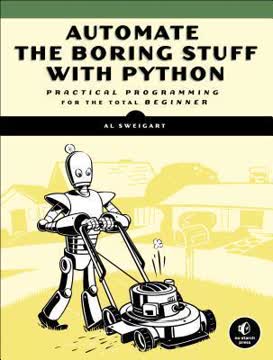
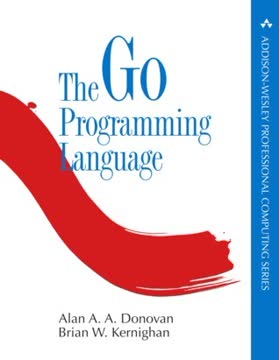
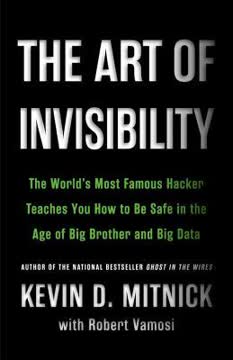
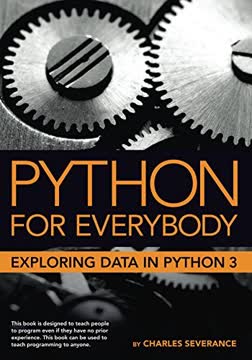
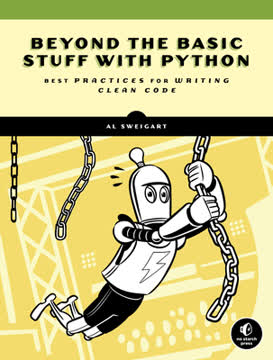
Download PDF
Download EPUB
.epub digital book format is ideal for reading ebooks on phones, tablets, and e-readers.

